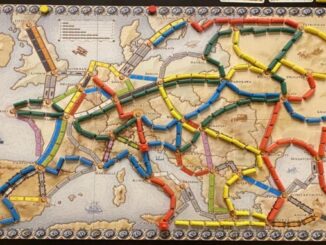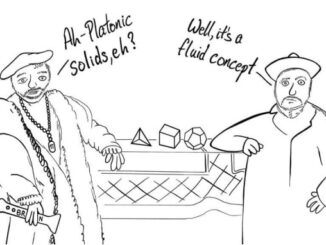
‘Biophilia’ is an excellent album, and app, by Bjork, and does include a number of brilliant interactive games, which help children (and adults) discover the wonder and beauty of both music and nature. I can highly recommend it. However, for the purposes of disambiguation (as they say on Wikipedia), this article is about the concept of Biophilia and how it might be used in games-based learning about environmental, and other forms of, sustainability.
Edward O Wilson who popularised the term in his book of the same name, posits the Biophilia Hypothesis which is that human beings innately possess:
…the urge to affiliate with other forms of life.
The term literally means ‘love of life’ and had been used before, notably by Eric Fromm, while the concept that humans possess this innate affinity can be traced back as far as Aristotle.
Biophilia and biomimicry in design
This article will look at two main aspects of the idea:
- How games can be designed to utilise/enhance this characteristic to facilitate learning in the sustainability field.
- The nexus between biophilia and biomimicry (design which mimics natural patterns and strategies) and how that can be utilised in learning design
When facilitating learning for corporate employees, in environmental and business sustainability, I commonly encountered three types of people / reactions:
- Learners who were already committed activists, or at least acutely aware of the issues we were facing regarding e.g. climate change or biodiversity loss.
- Learners who were somewhat aware / receptive to the messaging, but who were pessimistic about the potential for change, because they believed other things would get in the way, usually the need for business to continue ‘as usual’.
- Learners who believed that other things were more important than (and possibly incompatible with) protecting the environment, e.g. the need for economic growth. In extreme cases, this group also included e.g. climate change deniers.
There were definite differences in the perception of connection to nature felt by the respective groups. Notably, not only were members of the first group often ‘outdoorsy’, but this desire to be in nature frequently co-existed with the belief that environment, society and business are interconnected and interdependent.
Learner differences
While working with the first group was often like ‘preaching to the converted’, the intention of the learning programmes was to engender this same belief in interconnection in the latter two groups. Experience showed that a greater feeling of ‘connection’ led to a greater likelihood of individual behaviour change and of learners participating in action to drive the organisation’s sustainability strategy, once they were back at work.
This is self-evident if we reflect on the attitude of learners in the third group. To believe that e.g. the economy, is ‘more important’ than the environment, one must believe they are separate, and can operate separately. Whereas, in fact, the economy is reliant on resources provided by the natural world. There is no other source for them.
The learners in the second group have this same belief, only to a lesser degree. They effectively believe that economic (or social or some other form of) sustainability can be achieved independently of environmental sustainability.
All you need is love

In the end, we will conserve only what we love; we will love only what we understand and we will understand only what we are taught
– Baba Dioum
I believe this to be true, but prefer this second quotation when I consider the order in which I will design to engender a greater degree of biophilia.
Knowledge without love will not stick. But if love comes first, knowledge is sure to follow
– John Burroughs
Biophilia provides the learning designer with an excellent route to engender a feeling of connectedness.
That Biophilia exists becomes evident when we take learners out into nature (with the obvious exception, for some people, of inclement weather). We feel better, calmer, happier. Games can enhance this feeling by involving us in activities that intensify those feelings. They can also play a part in the case that direct experience of nature is not possible; where learning has to be held in indoor settings or in urban outdoor settings.
Biomimicry is a design approach which utilises lessons from nature, adopting strategies, patterns and processes which exist in the natural world, to innovate solutions to problems. It is most commonly applied to product design. A well-known instance of biomimetic design is the Speedo® sharkskin swimwear, a fabric covered in tiny ‘teeth’ which improved performance by swimmers to such an extent it was banned from competition. Beyond product design, this idea can be applied to e.g. learning design by adopting natural processes, structures and functions, such as ecosystems or the circular economy.
Design ideas

My favourite designs for games and playful activities I have worked on to promote biophilia have taken concepts directly from nature. In particular, I have found the concept of ecosystems very helpful in facilitating learning in organisations. Not only do games based on ecosystem function teach the concepts that learners need to understand in order to ‘get’ sustainability, but ecosystems are an excellent analogy for the way that organisations work.
Here are some mechanisms which can be used in this way
- Placing learners in the ‘shoes’ of aspects of an ecosystem, can be a powerful engine for empathy. ‘The environment’, ‘biodiversity’, ‘climate crisis’ and most of the terms we use in sustainability education, are abstract concepts. If however, you are experiencing the life and death struggles and having to make decisions within a game as if you are ‘primary consumers’ within a pond ecosystem, this makes the concepts real.
- Modelling ecosystem function such that decisions can be mapped against impacts, and relayed as a narrative which ripples through the ecosystem- clearly showing complexity and the far-reaching consequences of each action and reaction.
- Having learners ‘play’ the ecosystem, while the facilitator represents external factors such as human actions, reverses the ‘them and us’ relationship that exists between the learners and nature, with them inhabiting the ‘them’ for a change.
- The combination of ‘being’ the ecosystem, whilst simultaneously having the cognitive and reflective ability of human provides a powerful experience, which has on occasion reduced participants to tears
- The ecosystem can be given a ‘voice’ it does not have in reality, allowing learners to suggest remedial measures that can be taken to undo damage. This is also a powerful way to create empathy, with learners becoming very impassioned about arguing ‘their’ cause.
Specific examples of design of ecosystem games are detailed in another article, but I hope that this article has given enough information for readers to consider how they might enhance the innate biophilic nature of their learners to facilitate learning around sustainability.
- James Bore – The Ransomeware Game - 13th February 2024
- Ipsodeckso – Risky Business - 23rd January 2024
- Review – Luma World Games - 15th December 2023





Be the first to comment